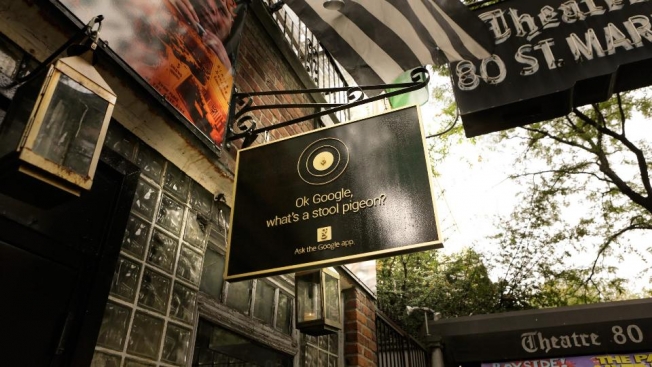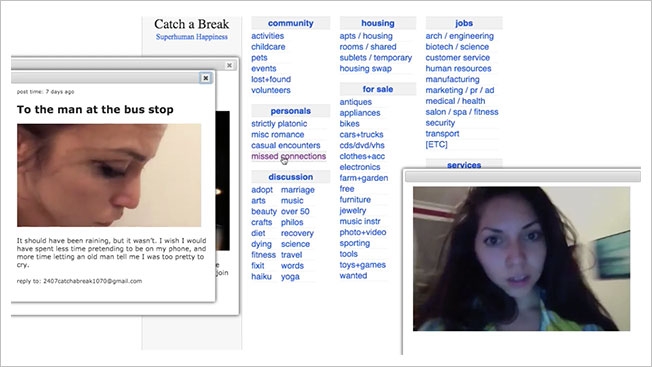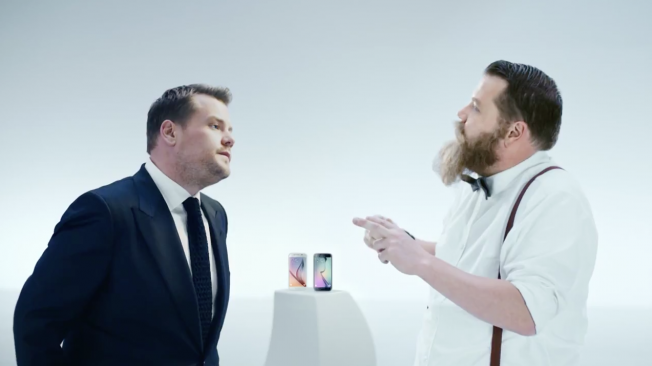![]()
Disembodied, badly equalized and with no musical cues or ambient sound around it, the nonetheless recognizable voice of Kevin Spacey in sneering antihero mode fuzzes over the computer speakers. "You think that you can just march into these countries based on some fundamentalist religious principles, drop a few bombs, topple a dictator and start a democracy?" he asks. "Ha! Gimme a break." A strange humming noise follows.
That audio clip, with no context, surfaced in May. A new episode of House of Cards, perhaps? An Aaron Sorkin project? It took the Internet a few hours to figure it out. When you ran the clip through a spectrogram(!), the waveform made by the hum at the end resolved into a picture of a soldier carrying a gun into battle in a pose instantly familiar to players of Activision's decade-plus-old video game franchise, Call of Duty. Which is to say, everybody.
The wildly popular game has earned Activision some $10 billion over its lifetime, which began in 2003, making it one of the most lucrative gaming franchises in history--with corporate siblings World of Warcraft and Skylanders among the others. For its 2011 iteration, Call of Duty: Modern Warfare 3, the company says it hosted 1.5 million concurrent players on the first day of release.
The larger operating unit of Activision Blizzard, Activision is run by former Deutsch LA co-CEO Eric Hirshberg, who assumed the CEO job in 2010 and hasn't looked back. "It's been a huge learning experience and very satisfying to be working on a creative product further upstream," Hirshberg says. "In advertising, all you get to do is influence the message and the way a product is positioned and communicated. But as we know from the ad business, a lot of times there isn't something special or differentiating baked into the product itself. And this is a chance for me to influence that and make sure that the things that we were actually launching were created different before communication ever began."
![]()
In marketing terms, it's tempting to think of Call of Duty as basically a film franchise, but that's wrong. It is true that, much like a movie studio, Activision manages the campaigns leading up to the latest release of the game each November (this year, Nov. 4) with teasers starting six months out, the rollout of a big launch trailer, and integrations across everything from last year's Eminem album to this year's partnership with Vice Media (a documentary sponsored by Activision about the leaders of the mercenary industry upon whom Spacey's character is modeled). But it is a year-round enterprise, with new maps, add-ons and fun stuff made available for purchase every few weeks between game launches. For each marketing blowout--whose centerpiece is a flashy trailer from 72andSunny--there are four smaller, targeted campaigns.
It's a good year to talk about strategy with Hirshberg and Tim Ellis, the company's CMO, because Activision is pulling out all the stops on Call of Duty: Advanced Warfare. The latest game has a new lead developer for the first time since 2005 (Sledgehammer Games, joining the alternating teams of Treyarch and Infinity Ward after working with the latter on CoD: Modern Warfare 3), and is going in a slightly more science-fictional direction. The series' hallmark has always been realism down to the last detail (Activision likes to play up the Pentagon's input into the games), but the new guns and tanks look more like they're on loan from the R&D division than the armory. In all honesty, the ripped-from-the-headlines thing doesn't always pay off. CoD: Black Ops 2 created a certain amount of controversy when Activision brought on Iran-Contra planner Oliver North as a consultant, and Manuel Noriega was less than thrilled with his cameo in Ghosts and is now suing the company. (Activision's official line, from none other than Rudy Giuliani, who represented the firm: "Manuel Noriega had no more than an inconsequential appearance in Call of Duty and isn't entitled to anything for his role as a brutal dictator.")
![]()
Activision CEO Eric Hirshberg (l.) and CMO Tim Ellis | Photo: Karl J. Kaul/Wonderful Machine
This time around, the most notable addition to the game is Spacey--a guy arguably more famous than either North or Noriega, and for much less scandalous reasons. Call of Duty's ads have a history of using Hollywood stars--Jonah Hill and Sam Worthington starred in a spot, directed by Peter Berg, for CoD: Modern Warfare 3. The developers also employ tinseltown production talent: screenwriters Stephen Gaghan (Syriana, Traffic) and David S. Goyer (The Dark Knight) have penned storylines for campaigns. Just last week, Los Angeles creative agency Ant Farm won a Grand Key Art Award in the audio/visual category from The Hollywood Reporter and the Clio Awards for its work on the Call of Duty campaign.
For Advanced Warfare, Hirshberg says, Activision wanted a face everyone would recognize. Spacey was at the top of the wish list. "He's a guy who's done some really enterprising things in terms of getting involved with different media," Hirshberg notes. "Doing a high-quality HBO-style show for Netflix is now a no-brainer; when he did it, it was a huge zag and unheard of."
The relationship is beneficial to both Activision and Spacey, according to Hirshberg. "We put him in front of a new audience who might not be familiar with some of his iconic films in another situation where he's trailblazing, being an actor on his level, a two-time Oscar winner in a completely new medium," he says.
![]()
Taylor Kitsch, best known for Friday Night Lights, stars in a trailer promoting the latest CoD. “I’m very proud of the way I can handle a gun now,” he says.
Part of the reason the series is changing is because, frankly, it needs to. Last year's installment, CoD: Ghosts, was not as well-received as other launches. And with next-generation gaming systems (Xbox One, Sony PlayStation 4) comes the next generation of play mechanics, and a much more open playing field. World of Warcraft is a major source of revenue for Activision Blizzard, but that income has declined along with its subscriber base. Activision is hedging its bets--a little. It commissioned a well-received multiplayer shooter game, Destiny, from Bungie, the studio that developed Microsoft's popular Halo franchise. But considering that the blockbuster game market caters primarily to people who buy two, maybe three games in a year, might Destiny eat into CoD's margins? Hirshberg insists that it won't. And as Cowen Group analyst Doug Creutz puts it: "If you're going to get eaten, you'd rather cannibalize yourself."
Creutz personally looks forward to playing the latest CoD. "It's futuristic and there's a greater emphasis on mobility in the player versus player, and Call of Duty lives and dies on the player versus player," he says. But the quality of the new title, he adds, might not matter. "It's hard to get people to come back even if you do a better job this time around. If my friends have moved on to something else, I'm going to play that," he says. The splashy Hollywood production values are there to attract new gamers, and that's always the balancing act for a game the size of Call of Duty: how to maintain both a massive fan base and manage churn by keeping the product appealing to a general audience.
Call of Duty is in a league by itself. Grand Theft Auto, BioShock Infinite, XCOM--all are great games, but their audiences remain limited because, even when they do incredible sales, they don't come out every year. Titles that do come out every year, like FIFA, don't change much. "Call of Duty is a little different because it's such a mass market product," Creutz says. "The rest of the industry is so niche-y, and it takes so long to launch."
As Ellis puts it, "We have to treat every launch as our comeback, and we can't just go in there trying to top ourselves. We have to go into it with the mind-set that we need a radical leap forward every year of the franchise launch."
Creutz estimates that Call of Duty costs $50 million to $100 million to launch and market each year. (Activision declined to comment.) It would be very hard to spend too much, he says. "They're doing over $1 billion a year on this game, so whether they spend $50 million or $100 million to make it, it's a rounding error. You spend what you need to spend to make it great," Creutz says.
Accordingly, for the game's big celebrity-driven trailer this time around, the company tapped Taylor Kitsch, best known for playing Tim Riggins on NBC's Friday Night Lights and star, with Colin Farrell and Vince Vaughn, of the coming season of HBO's True Detective. Kitsch was an obvious choice, not just because of his fan base but also his relationship with Berg, who created Friday Night Lights. And he recently worked on Lone Survivor, another project with a heavy military presence on set. "Having worked with Navy SEALs, I'm very proud of the way I can handle a gun now," says Kitsch. With respect to Call of Duty, he says, "I just hope to keep throwing curveballs." And there are more balls in the air than ever before. "The game has changed," says Kitsch. "And I haven't been in it forever, but it's definitely different, especially given how much that foreign box office means. Sometimes it's a good 75-25, if not 80-20."
Overseas concerns don't just affect the movie business. Activision relies on the international market, too. China, in particular, is vast and slippery territory for the gaming companies, with borderline nonexistent enforcement of piracy laws and supply chain problems companies that operate solely in the American market never have to deal with--even taking into account the digital nature of the product.
That's why Hirshberg has a well-regarded internal division, Raven, working on solutions. "We're making a specific game from the ground up for the Chinese market," he says. "The business model is a little bit different. You make the content that's right for the Chinese market--it's primarily free to play and microtransaction based, but we're doing it with our triple-A, Western studios."
The Chinese CoD, in other words, will probably be a freely downloadable game through Chinese media giant Tencent in which a user pays a few renminbi for perks--bigger guns, better bombs, emergency backup. It probably will be smaller in terms of file size than the multi-gigabyte edition that comes on Blu-ray discs for PS4 and Xbox One. In many ways, it is the industry's next challenge. To make it in the key Chinese market, Activision has to produce a high-quality game that can be downloaded and played over spotty connections via old cables and overloaded networks run by local monopolies.
Then there's the obligation to respond to any hiccups quickly and well. One of the ways CoD has remained popular in the U.S. is through customer relationship management. Ellis, who worked for Volkswagen and Volvo prior to Activision, understands the importance of customer relations. "We're constantly asking ourselves how best to keep players happy and engaged and just keep them coming back and wanting more," he says. "And then, of course, how do you encourage them to express themselves through creation of user-generated content and other sorts of ambassador activities?"
The answer can be found in virtually every meeting space at Activision. Throughout the building, Ellis says, one can find these wise words scrawled across whiteboards: "No Douche Moves."






































